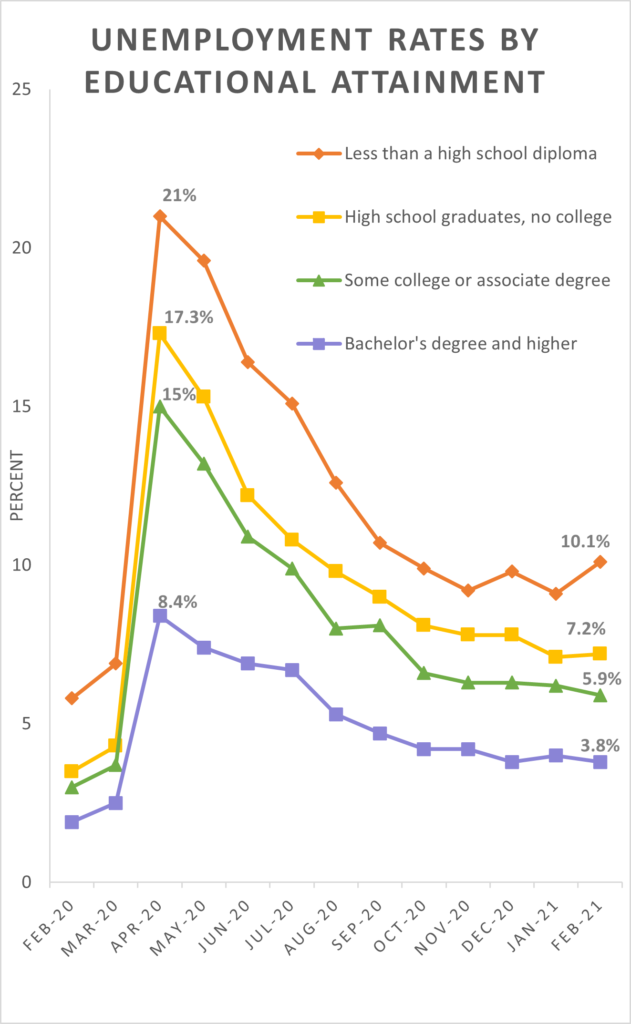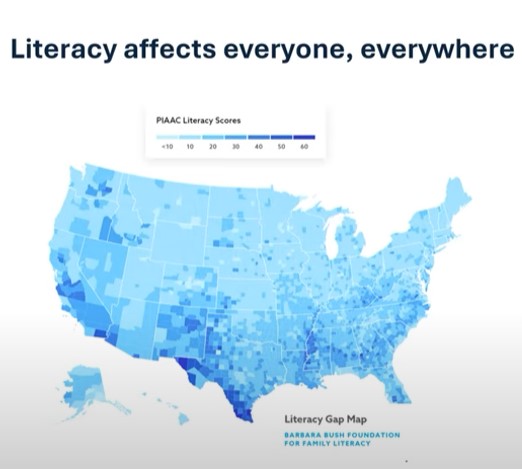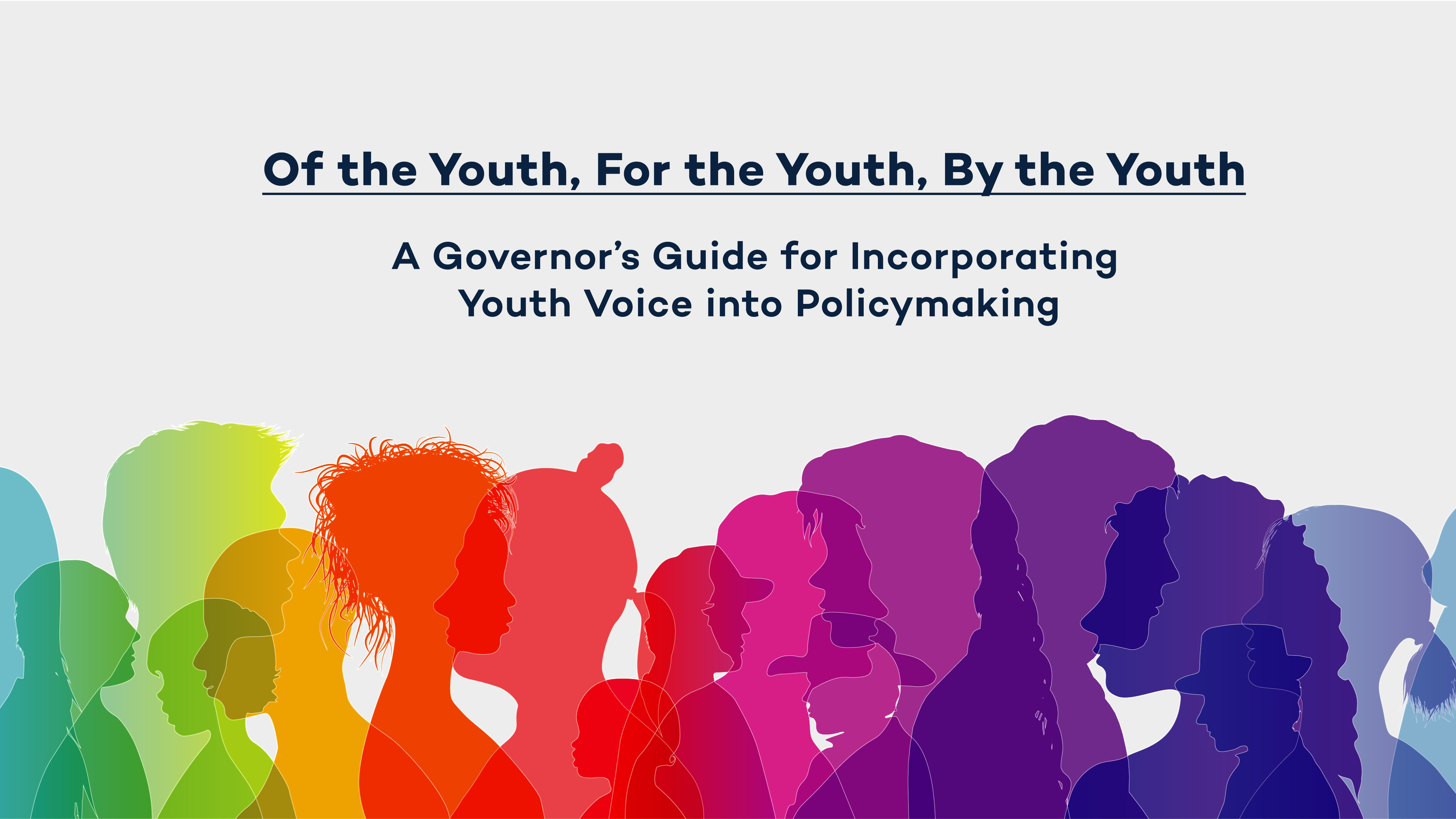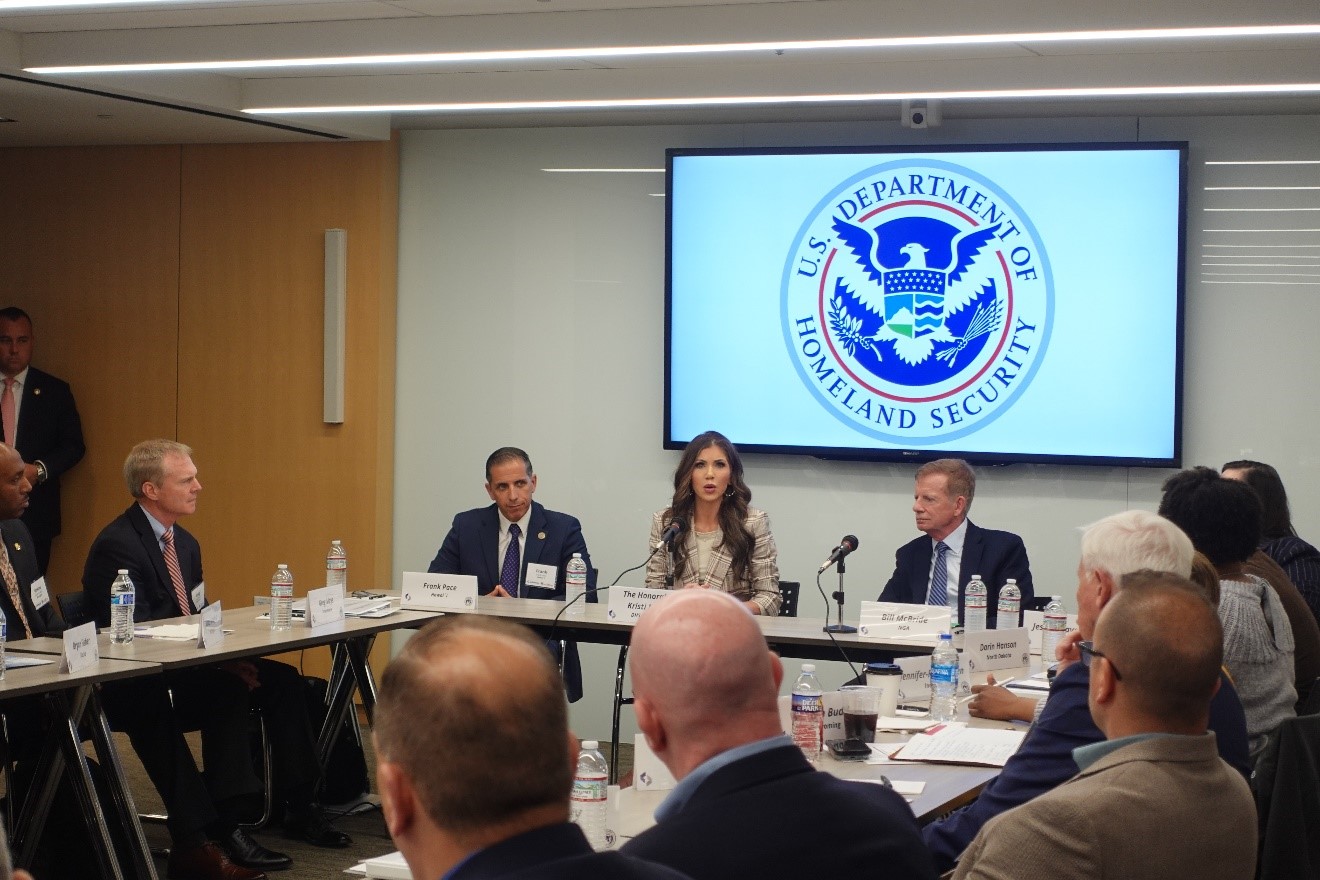Postsecondary institutions have a critical role in expanding affordable broadband access and closing the digital divide.
by Rachel Hirsch and Jake Varn
The gap between those with and those without consistent, sufficient and affordable access to the internet (known as the “digital divide”) has widened during the COVID-19 pandemic. Despite ongoing efforts to expand affordable broadband access and new plans for historic levels of infrastructure investment, the FCC estimates 30 million Americans are unconnected or underserved. In postsecondary education, this challenge is not new. The digital divide hindered access to professional credentials and degrees long before the pandemic moved lectures from classrooms to computer screens.
The pandemic and ensuing economic recession have underscored how important postsecondary education is in helping people achieve and maintain financial stability. Those with a high school diploma or less have been most severely affected by job loss and unemployment during the pandemic, while those with an associate degree, some college, or bachelor’s degree and beyond have seen more job stability and a higher rate of re-employment as of January 2021. Access to postsecondary credentials has never been more important, yet many who would benefit most from additional education face the highest barriers to accessing both affordable and reliable internet service and devices – the very tools they need to enroll and succeed in a program of study.

While the pandemic has drastically increased the need for access to remote learning, this need will persist even as in-person learning resumes. Hybrid learning models and online courses were growing in popularity before the pandemic and will no doubt continue to be an option, particularly for rural students or those with other barriers to traditional classroom learning. These barriers could include lack of transportation or life circumstances, such as the need to balance childcare or part-time work, making it hard to commit to a regularly scheduled class.
Surveys from the Pew Research Center show adults making less than $30,000 are half as likely to report having home internet access as adults making $75,000 or more, with only 56 percent reporting access in 2019. Importantly, while broadband adoption has increased over time for all populations, there has been a persistent racial gap in adoption rates, with surveys showing Black and Hispanic adults are 10 percent less likely to report having home internet service. Disparities in the availability of broadband access have also persisted for communities in rural areas and on Tribal lands.
This lack of access to internet and technology has influenced potential students’ ability to enroll and succeed in postsecondary education. Multiple surveys show internet and technology access has played a role in decisions to not enroll in or to drop out of postsecondary education. One recent survey asked why people dropped out of community college or decided not to enroll in the fall 2020 semester, and nearly one-fifth said they did not have the technology or internet access needed to take classes online. Another recent poll of college students in December 2020 showed 28 percent reported not always or often having a fast and reliable internet connection for coursework, and 54 percent of those with a connection say it comes at a significant cost to them.
Immediately following the onset of the pandemic and the shift to virtual learning, many Governors initiated or supported short-term solutions to access to broadband and computers. Examples of these strategies include:
- Creating mobile hotspots in underserved areas. North Carolina, South Carolina and Arkansas are equipping school buses with Wi-Fi routers and deploying them to low-income neighborhoods around the state where they serve as mobile hotspots. BroadbandOhio, the state’s broadband office, has been working with providers to promote public hotspot locations, including on college campuses and at public libraries.
- Coordinating with institutions, nonprofits and philanthropy to ensure students can access computers and tablets for free or at a reduced price. Georgia and Connecticut provided thousands of laptops and hotspots directly to K-12 students. California partnered with Google, which donated thousands of Chromebooks and 100,000 hotspots to households across the state.
More detail on immediate responses to the pandemic and transition to virtual learning can be found in NGA’s memo on supporting K-12 and postsecondary virtual learning environments here.
However, states must prioritize investment in the expansion of sustainable and affordable broadband infrastructure in order to permanently close the digital divide. Governors are at the forefront of this effort and have started this year by proposing record levels of investment in broadband infrastructure, with 36 Governors calling attention to the need for increased access in their State of the State addresses. Governors have expanded broadband access through a variety of strategies including targeted investments for anchor institutions such as schools, community colleges, libraries and universities to provide immediate access, coordinating and expanding affordability programs, and leveraging federal funding and financing opportunities.
- In Arizona, Governor Doug Ducey dedicated a combined $40 million from the Governor’s Emergency Education Relief Fund to increase rural connectivity between Northern Arizona University and the University of Arizona by installing fiber and broadband conduit along two interstates.
- California Governor Gavin Newsom released a 2021–22 budget proposal to increase funding for broadband access to the state’s public education institutions and to support distance learning opportunities. The proposal includes nearly $1 million for state library access and $8 million for the Corporation for Education Network Initiatives in California, which provides broadband access to the state’s public libraries, community colleges, state universities and other educational entities.
- Ohio Governor Mike DeWine’s 2022 –23 budget proposal includes $290 million for new broadband expansion programs, with $125 million per year for broadband infrastructure grants and $20 million per year for residential expansion grants. Additionally, Gov. DeWine set a goal to make postsecondary education accessible for all students, with the specific objectives of “improving broadband access across the state to ensure that students in rural areas and those learning remotely have the internet access necessary to be successful,” and to “continue to invest in higher education through state support, providing targeted, strategic increases in State Share of Instruction for quality programs, need-based financial aid, and services for at-risk student populations.”
- Oregon Governor Kate Brown’s proposed budget includes a $118 million investment in broadband expansion, with more than $10 million dedicated to expanding connectivity for schools without sufficient broadband service. Meanwhile, the organization Link Oregon, working in conjunction with the Oregon Department of Education, the state’s Higher Education Coordinating Commission, the state’s libraries, community colleges and universities, is developing a statewide “eduroam” program to enable Oregon schools, libraries and museums to extend wireless access to participating local or roaming students, teachers and the broader education community.
- South Carolina Governor Henry McMaster recently awarded $6 million of the state’s Governor’s Emergency Education Relief funds to the University of South Carolina and Benedict College to establish eight Apple computer labs for use by local school districts, the state’s Historically Black Colleges and Universities, the South Carolina Technical College System and local communities.
- Wisconsin Governor Tony Evers announced a $200 million broadband proposal in his State of the State address, dubbing 2021 as the “year of broadband access.” The proposal includes $40 million for supporting affordability programs for low-income households and $150 million for grants to build out broadband infrastructure.
At the federal level, the passage of the supplemental relief package in December 2020 and the American Rescue Plan in March 2021 have provided new resources for expanding broadband services. Several of these resources have already begun to affect the postsecondary institutions, including new subsidies for devices and more affordable internet service, and a new Connecting Minority Communities Pilot Program with $285 million in new funding for Historically Black Colleges and Universities, Tribal Colleges and Universities, and other Minority Serving Institutions to provide grants directly to students to pay for internet services or equipment. Recently, the National Science Foundation, along with Schmidt Futures, announced $2.7 million in broadband expansion grants through Project OVERCOME, with universities in Missouri and New York named among the seven projects receiving awards.
Beyond the immediate urgency to connect students and households during this pandemic, remote learning will remain a prominent fixture of the postsecondary education landscape. Remote learning options can increase equitable access, retention and completion, particularly for rural students or those with barriers to traditional classroom learning. But for all to have access to remote learning, affordable and high-speed broadband connections to homes must be expanded. As Governors have shown, forging partnerships with public and private education organizations, and strategically leveraging anchor institutions such as community colleges, libraries and universities will be critical to permanently closing the digital divide.












